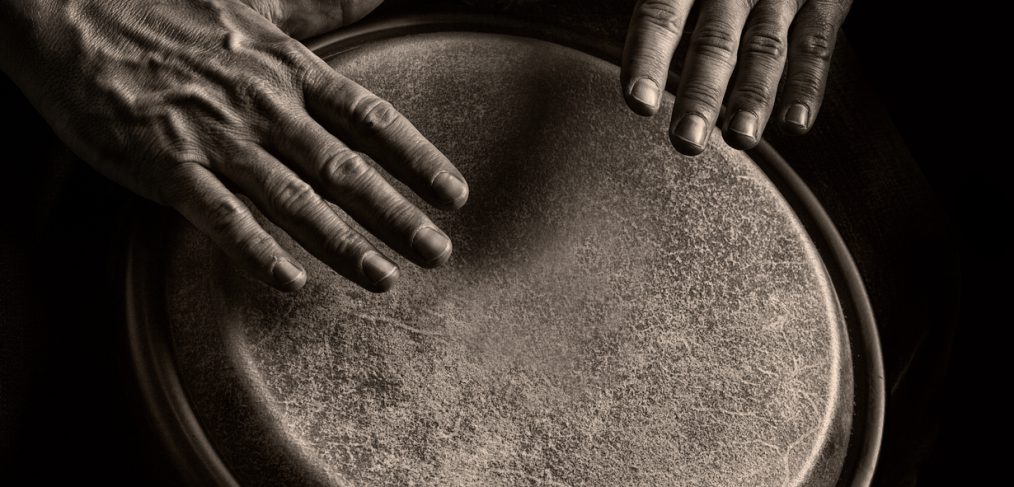
Rhythm
To live is to be musical, starting with the blood dancing in your veins. Everything living has a rhythm. Do you feel your music?
~Michael Jackson
We got the beat!
Rhythm is part of each of our lives, whether we are aware of it or not. Rhythm is defined as a strong, regular, repeated pattern of movement or sound. These regular patterns exist with us at all times—in nature, in our own bodies, in our creations, and in our constructed world. If we are musically inclined, we may notice them and—consciously or unconsciously—live our lives in time with them. Even when we don’t sense them or feel them, we tend to sync with them naturally.
Natural Rhythms
To me, the most important rhythms are those that occur in nature. When I am walking in an area with no human sounds—no car noise, construction, talking, or TV—I like to really pay attention to what I’m hearing. The rhythm of some of the sounds is regular and recognizable: the flapping of a bird’s wings or the tapping of a woodpecker. Some have a regular rhythmic pattern, but you have to pay attention to notice them, for instance, the song of certain birds or the gurgling of a stream. Some of the rhythms, like the waves on a beach or the wind in the trees, seem to follow certain patterns, but then those patterns are broken and new ones emerge. They’re mesmerizing and hypnotic if you allow yourself to truly listen.
Internal Rhythm
Our bodies are also rich sources of rhythms. Again, there are more obvious rhythms, such as our heartbeats and our breathing. The tempo of the heartbeat is a measuring stick for what we are experiencing in the moment. It speeds up when we exert ourselves, but it also speeds up when we are excited, emotionally affected, and sexually aroused. If we are trying to live in the moment, our heartbeats are a great reality check: They show us whether our minds are truly following our hearts (literally and figuratively).
Similarly, our respiration rate increases or decreases based on these factors. However, we have, to some degree, control over our respiration rates. When we’re feeling anxious or worried, we can focus on our breathing and, by bringing it under control—slowing down our tempo—we can become more cognizant of our emotional state.
Our Creations
We are a very rhythmic species, and it shows in how we express ourselves. The first thing that comes to my mind when rhythm is mentioned is music. I don’t know anyone who doesn’t have some relationship to music. At one end of the spectrum, there are those who create music. They hear music inside themselves and are able to put all the pieces together into a cohesive statement—a work of art. Others hear music and it strikes a chord—it touches something within them, and they feel compelled to recreate or reinterpret it. They learn the language of music, and even if they aren’t creating original works, they are putting their own stamp on the music they play. Those who don’t write or play music may have a relationship with it through appreciation. They hear it and it touches them in some way. Although they’re not playing music, they are experiencing it in a very real and often intense way.
When it comes right down to it, we are all musicians in our own way. One of my roommates in college had no internal meter at all and couldn’t find a melody if it was staring him in the face. But that never stopped him from belting a song out at the top of his lungs or dancing with frightening vigor and violence. He had his own “unique rhythm” that was as real to him as any great symphony was to a master composer
The Rhythm of Our Created World
Although I prefer the rhythm of nature, I can’t deny the very strong and insistent rhythm of the world we’ve created. Some of the most compelling rhythms are the cadence of a train going over the tracks, the rumbling syncopated beat of a two-stroke motorcycle engine, and the sound of a fan in the summertime. These rhythms have become as much a part of the pulse of our lives as any other. For some of us, these sounds go against the grain of our internal rhythms, and we avoid them. For others, they are part of the lifeblood of their existence—they thrive on and incorporate those man-made beats into their internal rhythms.
All of these rhythms are part of our lives, and if we are mindful of them, they can lead to interesting combinations. If I walk in a town or a city, the sounds of my footsteps are a counterpoint to the sounds of traffic, construction sounds, and the other ubiquitous sounds of developed areas. If I’m mindful of these combinations, these rhythms fall into a pattern in my mind that makes sense. When I’m walking on the beach, the rhythm of the ocean dominates any other rhythm that I hear or feel. In the mountains, the rhythm of my breathing takes over as I try to get enough air.
We each dance to the beat of our own set of rhythms—whichever set resonates with us most. Identifying and paying attention to our personal rhythms can help bring us more in step with our lives.



